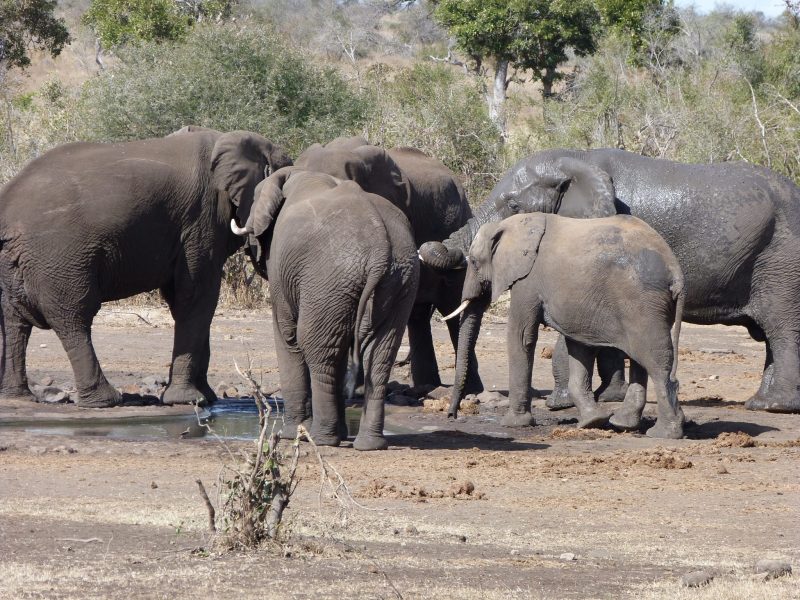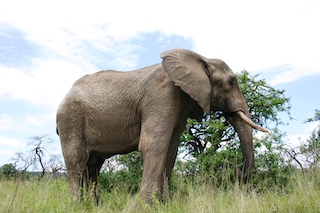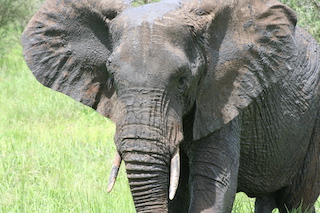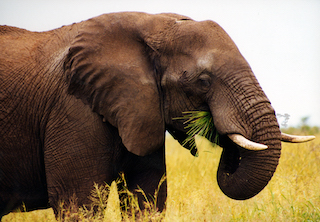Feelings, Emotions And Intelligence Of Elephants
In the wild, most elephants live in herds or clans that can only be separated by capture or death. Separation from one another, including transfer between different zoos, is a traumatizing event for them. During such trying moments, just like humans, elephants have proven to have shown great ability to empathize with the misfortune of others. The intelligence and insight of the animal are particularly note-worthy when they console each other in times of trouble.
Empathizing with others
The height of the pachyderm’s empathy reaches when they mourn their dead. Only humans have the capacity to have feelings for the death of their loved ones. The elephants display different reactions towards dead bodies or remains such as tusks and bones. They grieve and are filled with emotions when they encounter or touch the bones of other elephants that have died. They show signs of their grief by gently caressing the corpses with their trunks and touching them with their feet.

Fascinatingly, just like human beings do, recently dead elephants will receive a proper burial rite Source: onegreenplanet.org
Mourning their dead
In an experiment, when scientists presented an array of objects, the elephants reacted most to the tusks and bones once belonging to a deceased relative. Fascinatingly, just like human beings do, recently dead elephants will receive a proper burial rite. They mark the funeral ceremony by deep rumblings, touching, caressing and sometimes even crying. Passing herds pay respect to the dead bodies of those elephants that are reduced to a skeleton. Field researchers and biologists have seen elephants visiting the bones of long dead relatives even in far off places.
Style of interaction
The astonishing interaction styles of elephants always amazes people. The communication skills of elephants are as sophisticated as that used by cetaceans and apes. They are subsonic rumbles and vocalizations that other elephants can hear kilometers away as well as body postures. They use infrasound, which humans cannot hear, as well as other sounds that people can hear. The under 16hz infrasound are used to send signals to other elephants even 20 km away. The advantage of infrasound is that it can go around obstacles such as trees and bushes without shattering the sound. So, they can propagate on longer distances without human beings detecting them.
Adaptive communication styles
Human beings can hear some calls that have various other meanings because not all emitted sounds are infrasound. These means of communication include grumbles, lows, snores, roars or groans, each having a different signification. They use these contact calls for social reasons and specifically to keep in touch with each other. Female elephants are particularly able to distinguish between the contact calls of different relative members as well as non-related individuals outside the family. They can remember such calls from around 14 families in the population. Elephants also use body language appropriately in conjunction with their various communication styles. For example, they flutter their ears in a particular manner when emitting infrasound. The fluttering is rapid when they greet each other, and when they chat it is very slow.
Mirror recognition test
Scientists have long considered the ability to recognize one’s reflection in a mirror as an index of high cognitive ability. It is the greatest signs of the animal’s intelligence and one that only a few of the intelligent species such as humans, apes, and highly social animals can claim. Elephants are also among the exclusive group of animals that recognize its reflection in a mirror. This ability shows self-awareness, which is an indication of the animal’s capacity for intellect and thinking.
Taxing examination process
To pass the test, the elephant has to respond in clear ways that it sees itself, as opposed to believing it sees another animal. In this mirror examination, the experimenter applies a sticker or mark on the body of the study subject. Then they place a mirror in front of the elephant and nudges it gently to look at its reflection. If after seeing its image the elephant looks for the mark or sticker on its body then it passes the mirror test.
Challenges in experimenting
Scientists and researchers face insurmountable difficulties when experimenting with elephants. However, they have made progress on gauging the animal’s visual, olfactory, and vocal discrimination. Some have even pioneered work in the areas of hearing, self-awareness, and sensitivity to vibrations. But most of the experiments were done using zoo elephants and not with those that live in their natural habitat. Furthermore, these individual studies involving zoo elephants only recorded a sample data size of one.
Harder to test
Conducting more advanced cognitive experiments in their natural surroundings with rich data sets poses elephantine challenges. They instead do comparative cognition studies on pigeons, dogs, pigs, and primates. They also do rely on white mice, fruit flies, and zebrafish as research animals because they are cheap to house and raise. Moreover, it is easy to experiment them in a controlled environment and to run repeated trials for robust data sets. With elephants, it becomes much harder to manage numerous tests.
More studies needed

Elephants are such awe-inspiring creatures that when they convey their feelings, their peers easily notice them
Elephants are such awe-inspiring creatures that when they convey their feelings, their peers easily notice them. Some even consider that elephants do possess consciousness. Such thinking is not hard to believe. With further future analyses, it may be able to ascertain the veracity of its conscious possession. Using the mirror test, scientists have already proven the fact that they have a relatively high cognitive ability among most of the land animals. And there is a close relationship between intelligence and consciousness. Besides, there are many more captivating things about the elephants that they have so far not discovered. For that, it is essential that the researching biologists cross the experimental hurdles. The more we know about this adorable pachyderm, the more we realise that there is more to it than meets the eye.
5 Frequently asked Questions About Elephant Emotional Intelligence
To receive a colourful digibook about elephant with videos, images and text, please fill out the following form or simply email us on safaris@safari-center.com






